Contents
If you are a beginner florist, but you already want something interesting, beautiful, growing in different directions, and at the same time completely unpretentious, then you should take a closer look at Arabella clematis. Do not be afraid of the seeming capriciousness of these unique flowering vines. Description of the variety, reviews of gardeners, as well as photos and features of planting and caring for clematis Arabella, placed in this article, will help you make the right choice.

Description
Clematis Arabella was obtained in the UK in the early 1990s by breeder B. Fratwell. It got its name from the name of the daughter of the Lords Hershel, the wife of Lieutenant General J. Kizheli.
The clematis variety Arabella, which is discussed in this article, is unusual even if only because it does not have the ability to climb, like most of the clematis varieties familiar to everyone. It is customary to refer to the Integrifolia clematis group, the name of which is translated from Latin as whole-leaved. Indeed, the leaves of Arabella are not dissected, as in most clematis, and are covered with slight pubescence, which suggests that representatives of the Lanuginose group (woolly clematis) were present among the parents of this variety.
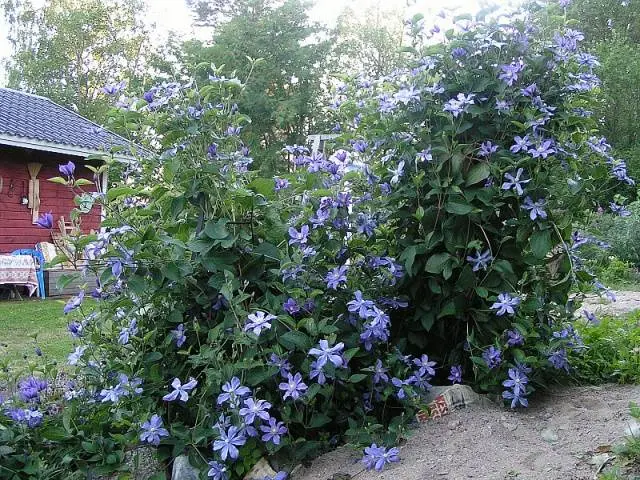
Bushes of this variety of clematis are able to form a fairly regular raised hemisphere from densely overgrown raised shoots. But at the same time, they have absolutely no ability to cling to anything, therefore, when grown on supports, they must be constantly tied to them (like climbing roses). In connection with this feature, clematis Arabella is often allowed to grow as a groundcover.
On average, the length of the shoots of this clematis reaches 1,5 -2 meters. But if it grows, covering the soil with its stems, then by attaching the shoots to the ground, it can be ensured that they can grow in length and up to three meters.
Clematis Arabella blooms on the shoots of the current year, so it is customary to attribute it to the third pruning group. His flowers are unique in that at the beginning of blooming they are characterized by a deep rich blue-purple color. As it blooms, the color fades and becomes bluish with a slight purple tint. The petals are elongated, separated separately from each other, they can be from 4 to 8 pieces. Anthers with stamens have a creamy tint, when opened they can turn yellow.
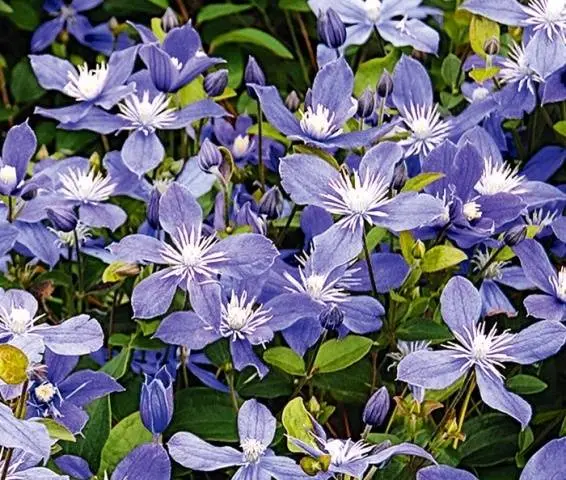
Flowering begins quite early – depending on the region of cultivation, it can be observed as early as June. Like most representatives of the Integrifolia group, Clematis Arabella blooms for a very long time, until September – October inclusive, as far as weather conditions allow. After heavy rains, the bush may fall apart and the plant may not look very presentable for some time, but soon new shoots with buds appear from the buds and flowering will soon continue.
Landing
The Arabella variety is usually referred to as clematis for beginners, since it can forgive the grower many mistakes, which are more luxuriously flowering and capricious varieties of clematis no longer forgive. Nevertheless, properly planted will serve as a guarantee of long life and abundant flowering.
Choosing a place and time for landing
All clematis love bright light, and Arabella is no exception, although semi-shady areas are quite suitable for him. Due to the characteristics of its growth, clematis of this variety can be planted in a pot or basket and grown as an ampelous plant.
And when planting in a flower pot, and in ordinary soil, the most important thing is to arrange good drainage for the roots of the plant, so that water during irrigation does not stagnate in the root zone in any case. No clematis likes this, and stagnant water is the cause of most clematis health problems.
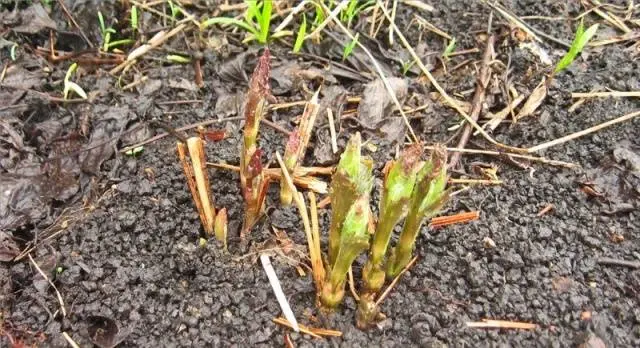
If you got a seedling with a closed root system, then it can be planted at almost any time during the warm season. It is better to grow rooted cuttings of clematis Arabella first in a separate container, in which it will be possible to subsequently cut the walls so as not to damage the root system.
Clematis Arabella seedlings with an open root system are preferably planted either in late spring or early autumn.
Whatever time you plant a seedling, in the first month after planting, it needs shading and constant maintenance in a wet state until it is fully rooted.
Selection of seedlings
Of all the varieties of clematis planting material widely available for sale, it is best to choose small rooted cuttings with dormant buds. They are easiest to save until planting in the bottom of the refrigerator, and when they start to wake up, then temporarily plant them in a nursery.
Clematis seedlings with a closed root system and green shoots can be bought if it is possible to plant them in the ground for 1-2 weeks, otherwise you will have to look for a suitable place to overexposure them for a long time.
When choosing clematis seedlings with open roots, they should have 2-3 unblown, but living buds and about 5 root processes, with a total length of up to 50 cm.
Soil requirements
Clematis Arabella is able to grow on almost any soil, as long as it has a drainage system and nutrients.

How is landing
If you plant clematis directly into the ground, then at least 20 cm of a drainage layer of expanded clay or crushed stone must be laid out at the bottom of the prepared pit. When planting this variety in hanging baskets, a drainage layer is also necessary, but it can be about 10 cm.
For planting in a hanging planter, you can prepare a mixture of garden soil with humus by adding a few handfuls of superphosphate to it. When planting in the ground, the addition of humus and wood ash with superphosphate is also desirable, since it will provide the plant with nutrients for the whole year.
When planting, the root neck of a clematis seedling is recommended to be deepened by 5-10 cm, but in northern regions with high humidity it is better to use a thick layer of organic mulch on top of the plantings.
If you want to use a support, it is best to install it before planting the seedling. Just keep in mind that the thin shoots of Clematis Arabella are not able to cling to it and you will need to tie it up all the time.
Care
Caring for Clematis Arabella will not require any extra effort from you.
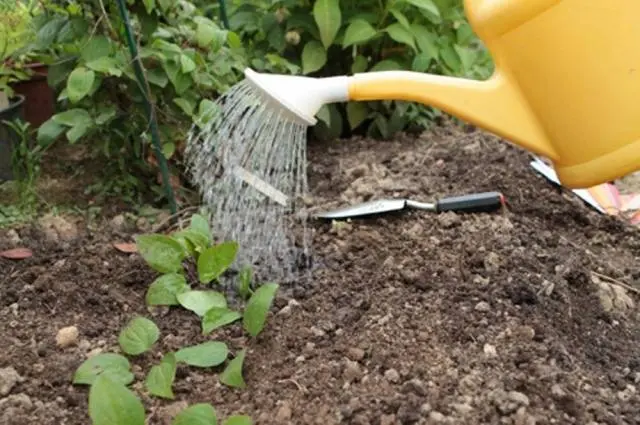
Watering
Watering can be done about 1 time per week, in especially hot and dry weather, perhaps more often.
Additional fertilizing
Regular feeding will be needed from about the second year of the plant’s life. You can use ready-made complex organo-mineral fertilizers for flowers once every two weeks.

Mulching
Clematis roots do not like heat and dryness at all, therefore, to preserve moisture and a suitable temperature regime, it is best to abundantly mulch the root zone immediately after planting with straw, compost or humus. Subsequently, you need to monitor and update the layer of mulch about once a month or two.
Trimming
Clematis Arabella belongs to the third pruning group, therefore it is cut off heavily in autumn – small (15-20 cm) stumps with 2-3 buds remain from all shoots.
Shelter for the winter
The Arabella variety tolerates frost well, so it is enough to cover the shoots left after pruning with a layer of organic matter and strengthen any covering material on top.
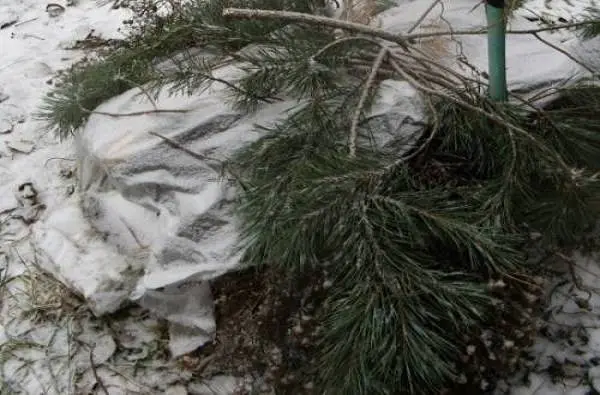
Fighting diseases and pests
Clematis of the Arabella variety usually endures any adversity, and if all care requirements are followed, then diseases and pests are usually not terrible for him. For the prevention of diseases, you can treat the plants with a solution of Fitosporin, and the bioinsecticide Fitoverm will help well against pests.
Reproduction
Arabella reproduces exclusively by vegetative means, because when you try to propagate it by seeds, you will get a result that is far from the original variety.
Cuttings are considered one of the easiest and most affordable ways, but in the case of Clematis Arabella, its cuttings take root slowly and rather tightly.
The best way for this variety is to propagate by layering. Since often the stems of clematis Arabella already creep along the ground, it is not difficult to pin them to the ground once again. The daughter plant can be separated from the mother plant in the fall, before pruning.
Dividing the bush is also quite an affordable way, but it does not allow you to get a lot of planting material at once.
Professionals sometimes use clematis grafting, but this method is not at all suitable for beginners.
Application of Arabella in garden design
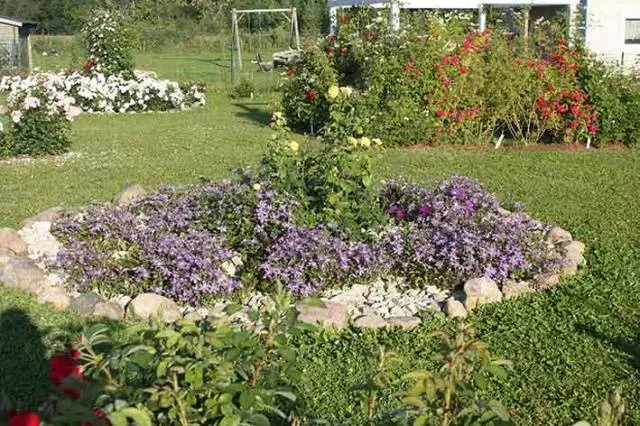
Clematis Arabella, first of all, will look great as a ground cover plant both in a mixborder, where it forms flowering curtains, and at the base of the walls, decorated with climbing large-flowered clematis.
You can use it in rock gardens, on retaining walls made of gravel or stone. And if you plant it next to small conifers or perennials, then the shoots of clematis will be able to grow through them and, relying on the stems, decorate them with flowers.
However, no one forbids letting it grow on a support, it is only necessary to periodically tie it up in different places.
Recently, it has become fashionable to use clematis Arabella to decorate balconies and terraces in hanging planters and baskets.
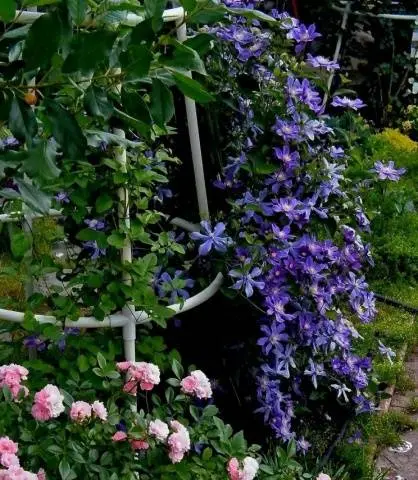
Reviews
Conclusion

If you have long dreamed of getting acquainted with clematis, but did not decide where to start, try planting the Arabella variety in the garden. It is unpretentious, but it will delight you with its flowering all summer and even autumn, if it is warm. In addition, it is well suited for growing in containers on balconies or terraces.









